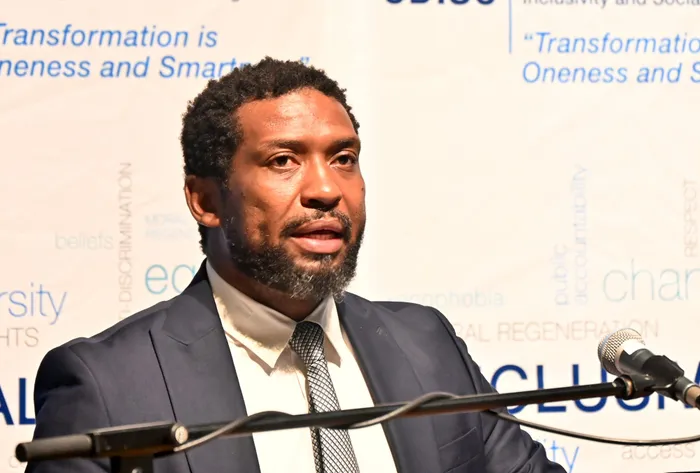Higher Education Minister warns of limited spaces for matriculants in 2026

Higher Education Minister Buti Manamela outlines the challenges of limited university spaces amid soaring student applications, during a media briefing in Pretoria.
Image: Ayanda Ndamane / Independent Newspapers
Higher Education Minister Buti Manamela says South Africa’s post-school education system will only be able to accommodate around half of the 850,000 matriculants expected to sit for their final examinations this year.
In an update on the readiness of universities, Technical and Vocational Education and Training (TVET) colleges, and Community Education and Training (CET) colleges for the 2026 academic year, Manamela also addressed the opening of applications for the National Student Financial Aid Scheme (NSFAS).
“The reality is that about 850,000 young people will be sitting for exams. If all of them pass, the system can only absorb half,” said Manamela.
“Between now and the next three months, we will be looking for solutions for the rest. Some will look for jobs, take a gap year or consider other options, but we must plan for those young people.”
The department has projected around 235,000 first-year spaces at public universities, 170,000 at TVET colleges, and 120,000 at CET (Community Education and Training) colleges - a combined total of 525,000 available spaces for new students in 2026.
Manamela said the system cannot accommodate every qualifying learner.
He added that many learners and parents wrongly assume that a bachelor’s pass guarantees entry into university.
The number of young people completing matric has been steadily increasing, creating further pressure on the system.
“Each year, more young people pass with a bachelor’s pass. Last year, about 615,000 passed matric, though fewer with bachelor-level results. Yet, spaces remain limited - in universities, TVETs, and community colleges - as well as in private institutions.”
Earlier this year, universities reported record numbers of applications, far exceeding the spaces available.
-University of Johannesburg (UJ): 693,990 applications (358,992 applicants) for only 10,900 undergraduate places
-University of KwaZulu-Natal (UKZN): Over 290,600 applications for around 8,600 first-year spots
-Stellenbosch University: 90,027 applications for only 6,005 available places
The most wanted programmes included Bachelor of Education (all phases), Bachelor of Nursing, Bachelor of Arts, Bachelor of Laws (LLB), Bachelor of Social Work, Bachelor of Commerce in Accounting, Diploma in Public Relations and Diploma in Logistics.
Manamela said the department's aim is not just to increase enrolment numbers, but to ensure students succeed once they enter the system.
He said the country’s universities can accommodate around 1.1 million students.
NSFAS provides bursaries and loans to around 900,000 students, including 130,000 studying at community colleges.
The Sector Education and Training Authorities (SETAs) also provide thousands of learnerships, apprenticeships, and skills programmes each year for the unemployed, the working population, and those not in employment, education or training.
Despite improvements in access to higher education, many structural challenges remain unresolved.
Students continue to face delays in NSFAS allowance disbursements, inadequate student accommodation, poor infrastructure, rising student debt, which often prevents students from receiving their qualifications.
Get your news on the go, click here to join the Cape Argus News WhatsApp channel.
Cape Argus